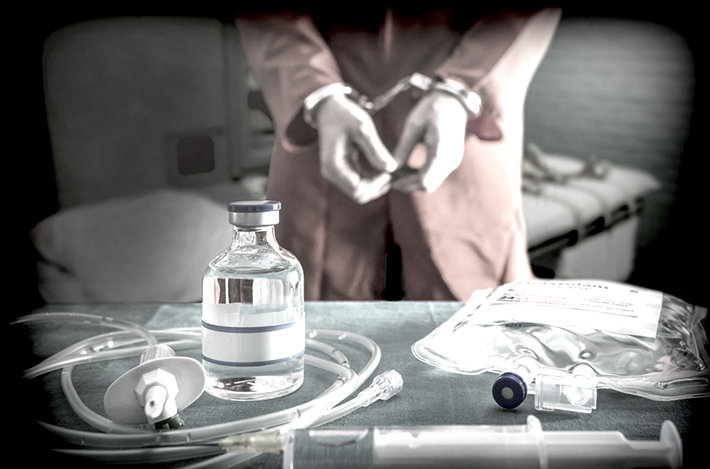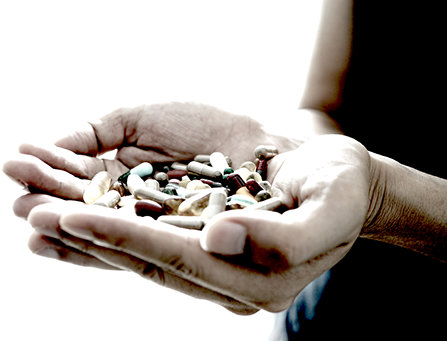U.S. Prisons Now Heavily Medicating Inmates

How we address our nation’s prison system is something of a growing concern, a problematic issue that we need to spend more attention on. And in the very recent news, U.S. correctional institutions are becoming more inclined to heavily medicate inmates on anti-addiction medicines, even though there are worlds of test data and information dictating the massive risk and potential health crisis issues attendant with anti-addiction medications.
Before we get into the controversy on excessively medicating inmates, we need to first explore the controversy attendant with medication-assisted “therapies” for overcoming addiction.
What are Medication-Assisted Treatments?
U.S. prison systems are now desiring an increase in the use of medication-assisted, anti-addiction drugs. There is this new emergence in the medical industry that says that we can actually use medicinal drugs to overcome addiction to drugs. Medication-assisted therapy is best defined by the U.S. Department of Health and Human Services. In their words:
“Medication-Assisted Treatment (MAT) is the treatment for opioid addiction that uses medications such as methadone or buprenorphine to treat addiction to short-acting opioids, such as heroin, morphine, and codeine, as well as synthetic opioids…”
“Medication-Assisted Treatment (MAT) is the treatment for opioid addiction that uses medications such as methadone or buprenorphine to treat addiction to short-acting opioids, such as heroin, morphine, and codeine, as well as synthetic opioids, including oxycodone, OxyContin®, and hydrocodone. MAT operates to normalize brain chemistry, block the euphoric effects of opioids, relieve physiological cravings, and normalize body functions without the negative effects of the short-acting drugs of abuse.”
The U.S. Department of Health and Human Services went on to say that:
“Patients who receive treatment in an Opioid Treatment Program (OTP) are required by Federal regulations to receive medical, counseling, vocational, educational, and other assessment and treatment services, in addition to the medication for the opioid addiction.”
Medication-assisted therapy is a well-pitched, carefully articulated design that has a lot of Americans sold on the concept. “Take a drug and suddenly be drug-free from the other drugs? What a brilliant idea!” This is the general concept here. Americans are easily sold on a quick fix, band-aid approach to doing something. We are notorious for wanting the fast route out of something, and we tend to take that fast route instead of doing our research, getting informed, and possibly going the longer, but the more effective way.
This is medication-assisted therapy in a nutshell. The idea is that people can overcome their own substance abuse problems simply by taking another medicine. But the problem is, such a promise completely neglects the concept that there is any mental or spiritual concept attendant with drug use and alcoholism. And that is a big mistake.

The truth is, no medicine can “cure” addiction. Buprenorphine, Methadone, Vivitrol, none of these medicines can help a person fully overcome their drug habit. And if a person is put on such a substance and is logged into a maintenance program where they have to stay on the substance indefinitely, now we are just talking about a full-on emergency condition and a potential disaster in the form of a lifetime of dependence on the very drug that is supposed to free one from dependence!
The truth is, no one is truly free from addiction and dependence until they are fully free from all drugs. Being dependent on a drug to prevent other drugs from coming into a person’s life does not sound much like freedom from addiction at all. Not in the slightest.
Why We Need to Keep Drugs Out of Prisons
The United States has about three-thousand, two-hundred jails, and one-thousand, nine-hundred prisons. About three-hundred of those facilities are now fixed on offering addiction medication to inmates. This news comes from the U.S. Department of Justice.
The idea here is that the increased use of medication in prisons will make inmates less likely to try and use illegal narcotics while in prison. At this time, two-hundred and ninety jails and prisons are using Vivitrol injections on their patients who had a history of opioid addiction. And about thirty prisons are giving their inmates methadone and buprenorphine. Keep in mind that methadone, in particular, is one of the most addictive drugs in the world. Some say that methadone itself is even more habit-forming than opioid drugs are.
One can probably start to see where this “solution” is going. If hundreds of thousands of U.S. prison inmates are put on drugs that have any addiction potential at all, those inmates are likely to become addicted to those medicines. And then Big Pharma nets millions of dollars off the backs of the Federal Justice Bureau. Pharmaceutical giants will sign contracts (if they haven’t already) with the federal government to send their medications to U.S. prisons. And who will ultimately pay for it all? U.S. taxpayers.
If we are going to spend U.S. tax dollars on the prison system (which we absolutely should do) we should be spending our money on getting inmates actual counseling, life skills, life-enhancement, job-training, addiction counseling and care, and the legitimate tools that they need to succeed in life. Most inmates have spent their entire adult lives depending on substances, medicines, drugs, alcohol, and other crutches just to help get them through the difficulties and unpleasantness of life. So why would giving them another substance to rely on be a good idea? Logically speaking, this actually sounds like a very bad idea.
How We Address Addiction as a Society
At this time, our country is notorious for spending money on sweeping up and mopping up the consequences of drug use and alcoholism as opposed to trying to address the causes of those consequences instead. According to the National Center on Addiction and Substance Abuse at the Columbia University, for every dollar we spend on the U.S. drug problem, only two cents of that dollar goes to the prevention of drug abuse and treatment for addiction. The other ninety-eight cents is spent on cleaning up the consequences and the mess that is caused by drug and alcohol misuse.
According to a 2010 study from CASA, it was extrapolated that if we gave quality addiction treatment (and not medication-assisted treatment either) to every inmate who had an addiction, we would experience a massive return on investment when those inmates were released and entered into the workforce. As for the specifics of the study, it was found that every dollar spent on an inmate’s rehabilitation and drug addiction treatment would be returned in the form of the individual’s tax returns when he or she completed rehab and got a job, (as opposed to just going right back to drug use).
It does not take a genius to see that treating inmates for their drug problems is the right way to go. This could not be more clear to us than it is now. Addicts absolutely need help overcoming drug and alcohol addiction, and it doesn’t make a difference if they are inmates or not. If they need help they need help.
But the thing to remember is that the correct way to help an addict does not exist in the form of a pill or daily medicine that the person has to take. The correct way to address addiction lies with real help and real solutions and real treatment methods and rehabilitative services. This is what inmates need to build a stable and firm foundation in sobriety and abstinence from addictive substances.
Sources:
- https://www.usnews.com/news/healthiest-communities/articles/2018-08-07/jails-prisons-slowly-loosen-resistance-to-addiction-meds
- https://www.washingtonpost.com/news/to-your-health/wp/2014/08/14/we-cant-afford-to-ignore-drug-addiction-in-prison/
- http://atforum.com/documents/Know_Your_Rights_Brochure_0110.pdf


 ®
®